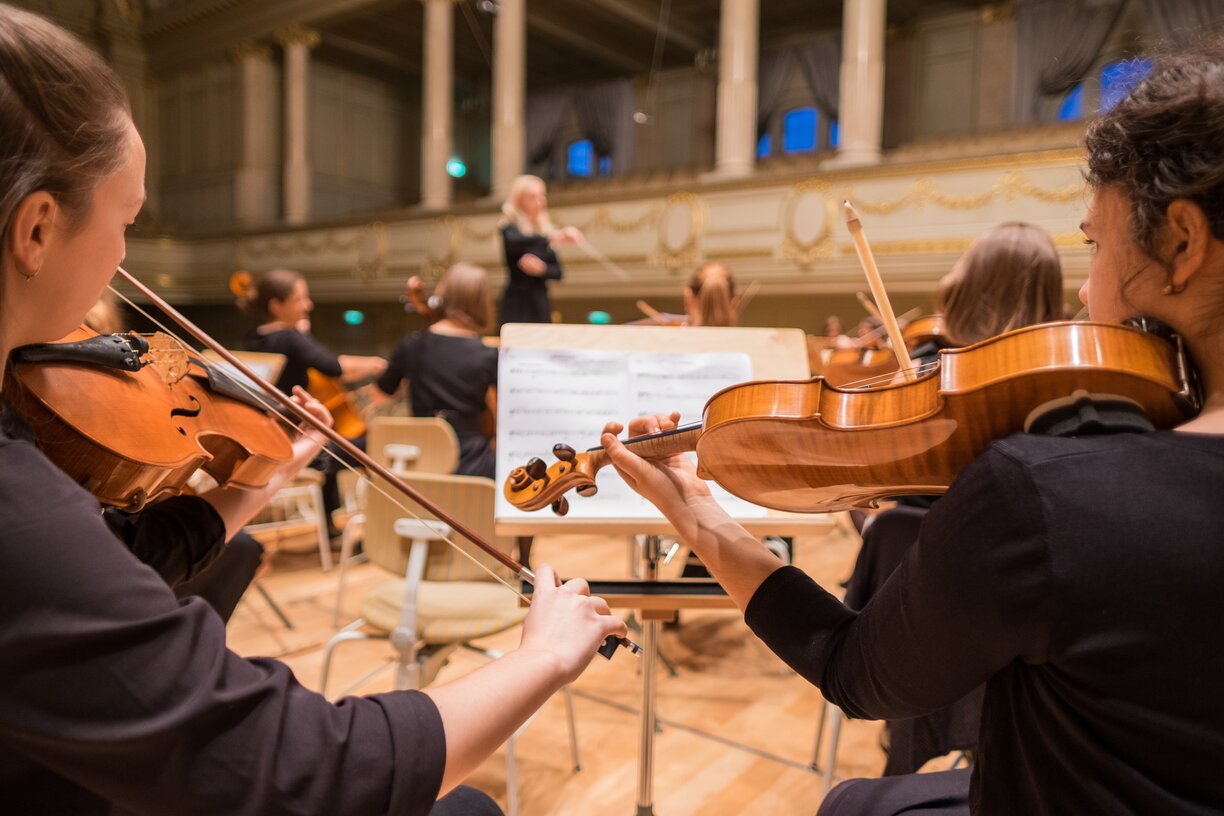While the horsehair on your bow is incredibly strong, it doesn’t last forever. The hairs become hard and brittle after months and months of playing or as seasons change in particularly humid areas. The hairs no longer grip your instrument strings like they once did — no matter how much rosin you apply!
The only way to regain the powerful, clear sound quality you crave? Rehair your bow. The rehairing process involves replacing worn strands of horsehair with new ones. But, how often do you need to change and replace your violin, viola or cello bow hair?
Six Signs It’s Time to Have Your Bow Rehaired
Rehairing your bow isn’t necessarily something you can predict or schedule like a routine oil change. Some people can go years between rehairs, according to String Magazine, while others “need a new hairdo every six weeks.”
Pay attention to your bow, playing experience, and the environment you perform in to know when it’s time for a rehair.
Symptoms of failing bowstrings include:
Your bow won’t tighten anymore: When you can no longer tighten the bow to tension, it might be time for a rehair. The bow hair has likely been stretched to the end of its length and will no longer deliver a clean sound.
Your bow produces a scratchy sound: Either you applied too much rosin, or you’ve reached the end of your bow hair’s useful life. After repeated use, the hair has to work harder and harder to grip the strings and eventually has to be retired.
Hairs are breaking in the middle of the bow: Your bow might feel stable, but it actually has too much camber if hairs are constantly breaking in the middle. The strands are grinding between the strings and the stick at playing tension.
Hairs are breaking on one side of the bow or the other: Unevenly distributed breaks could result from uneven bow tension. If left unattended, too many broken hairs on one side can eventually warp the bow.
Hairs are dirty or smelly: Eek! Have you been touching the bow hair? Do parts of the hair look dark and dingy? Do the hairs smell strange? The dirt and oils on your hands can comprise the bow hairs. Clean the hairs with a soft, dry cloth. If they’re still discolored and stinky, it’s time for a rehair.
The skin on the back of your hand is dry: Okay, so this sign isn’t directly related to your bow, but it can be indicative of an environmental issue! Check your bow if the skin on the back of your hand is dry. A lack of humidity could be harming your bow (and sucking moisture from your skin) without you realizing it!
Hair that’s just the right length for a dry season can be too long to reach playing tension in the spring. On the flip side, hair that’s too short for the dry season can cause the head to snap off a bow when humidity increases.
“In climates with markedly contrasting seasons, it’s quite common to rehair bows in the spring and fall due to changes in humidity,” adds Strings Magazine.
Note that if you play with a carbon fiber bow, it won’t react as much to tension changes in the hairs as they shrink and expand with humidity.
How Often to Change Your Violin, Viola or Cello Bow Hair
There’s no silver bullet which indicates how long a violin, viola or cello bow lasts before it needs to be rehaired. Instead, it depends on your playing style, climate, and who you ask. If you play with one of our carbon fiber bows, we recommend rehairing your CodaBow every 6 to 12 months.
“If you practice a lot (4 to 5 hours a day) you may need to get your bow rehaired every couple of months,” writes Peter Zaret and Sons Violins. “For most people, every 6 months to once a year is enough if all or most of the hairs are still intact.”
Laurie Niles of the Violinist.com adds that “luthiers tend to recommend getting a bow rehair about every six months.”
Whether you go months or years between rehairs, don’t wait when you know it’s time for new bow hairs. Not only will the sound quality of your playing suffer, but you risk damaging your bow and instrument, potentially beyond repair.
CodaBow Pro Tips: When To Rosin, Repair, or Replace a Violin or Viola Bow
On behalf of CodaBow, master violist David Auerbach shares pro tips, including how he knows when it’s time to rosin, rehair or even replace your bow.
New Hairs, New Bow, New You!
Submit a service request if your CodaBow is in need of rehairing. We use three different grades of Mongolian horsehair to rehair our carbon fiber bows: student, performance, and master-level horsehair. Rehairs cost $69 for current CodaBow models, $79 for bass models, and $89 for discontinued models plus a return shipping fee of $24.
Time to start fresh with a new bow instead? Just want to try something different? Then check out CodaBow carbon fiber bows for violin, viola, and cello. Carbon fiber bows are less reactive to tension changes in the hairs as they shrink and expand with humidity.
With a CodaBow in-home trial, you can try a new bow for seven days and if you don’t like it, send it back. We provide free shipping both ways. See what decades of education, research, and exemplary bow-making expertise feels like!
Considering a New Carbon Fiber Bow?
CodaBow did more than pioneer the carbon fiber bow industry, it perfected it. Supported by our four brand pillars: performance, quality, integrity, and service, our carbon fiber bows have innovative features enabling you to always give your best performance. Feel free to sign up on our email list for additional information for bow servicing and replacement.



Stay Connected